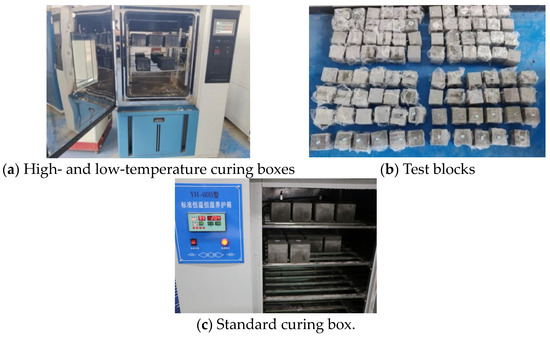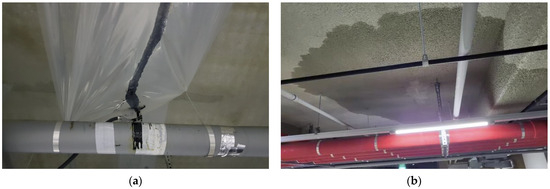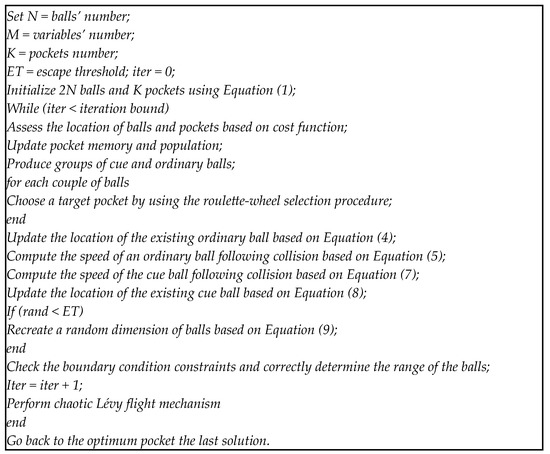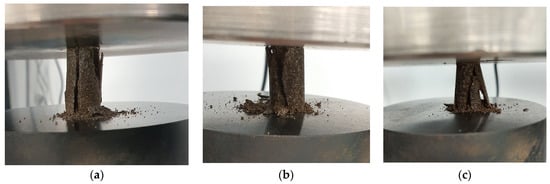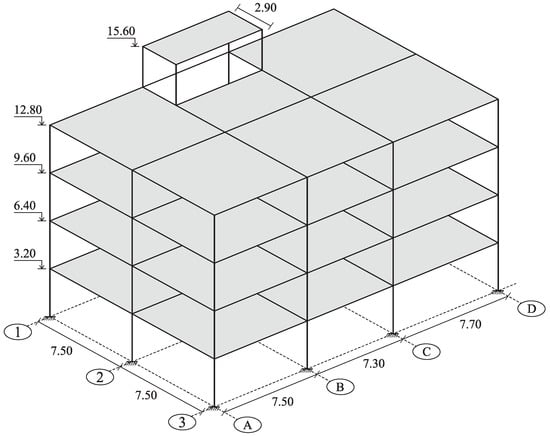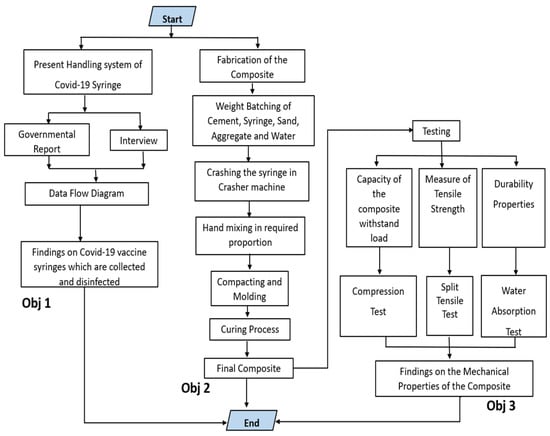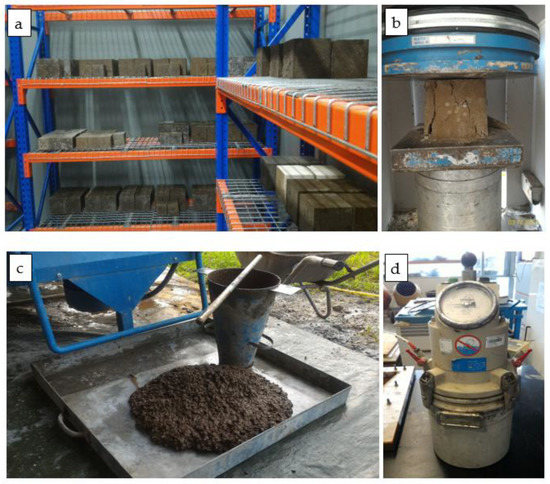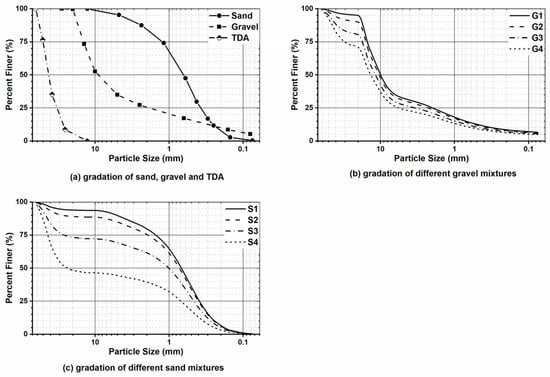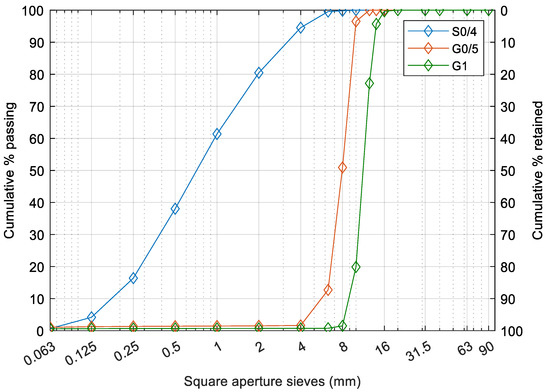Advances in Sustainable Building Materials and Construction
(Closed)
Share This Topical Collection
Editor
 Prof. Dr. Moncef L. Nehdi
Prof. Dr. Moncef L. Nehdi
 Prof. Dr. Moncef L. Nehdi
Prof. Dr. Moncef L. Nehdi
E-Mail
Website
Collection Editor
Department of Civil and Environmental Engineering, Western University, London, ON N6A 5B9, Canada
Interests: resilient infrastructure systems; artificial intelligence; sustainability; eco-friendly structures; cement and concrete
Special Issues, Collections and Topics in MDPI journals
Topical Collection Information
Dear Colleagues,
The built environment is the most energy-intensive sector of the economy. Moreover, the construction industry is the most responsible one worldwide for depleting natural resources. Portland cement production alone is currently the third largest source of global CO2 anthropogenic emissions. With the advent of climate change threats to ecosystems, biodiversity, and human life, research on energy-efficient buildings as well as sustainable and eco-efficient construction materials has become of paramount importance. This Topical Collection seeks robust research studies on eco-efficient and carbon-neutral construction materials, building materials with high amounts of recycled content, the beneficiation of by-products and waste materials in construction, green construction practices, sustainable construction materials with enhanced mechanical, durability, and thermal performance, and related innovative research centered on the sustainability of building construction. Both experimental and modeling studies will be considered. Submitted studies shall clearly identify their novelty and contribution to the state of the art.
Prof. Dr. Moncef L. Nehdi
Collection Editor
Manuscript Submission Information
Manuscripts should be submitted online at www.mdpi.com by registering and logging in to this website. Once you are registered, click here to go to the submission form. Manuscripts can be submitted until the deadline. All submissions that pass pre-check are peer-reviewed. Accepted papers will be published continuously in the journal (as soon as accepted) and will be listed together on the collection website. Research articles, review articles as well as short communications are invited. For planned papers, a title and short abstract (about 100 words) can be sent to the Editorial Office for announcement on this website.
Submitted manuscripts should not have been published previously, nor be under consideration for publication elsewhere (except conference proceedings papers). All manuscripts are thoroughly refereed through a single-blind peer-review process. A guide for authors and other relevant information for submission of manuscripts is available on the Instructions for Authors page. Buildings is an international peer-reviewed open access semimonthly journal published by MDPI.
Please visit the Instructions for Authors page before submitting a manuscript.
The Article Processing Charge (APC) for publication in this open access journal is 2600 CHF (Swiss Francs).
Submitted papers should be well formatted and use good English. Authors may use MDPI's
English editing service prior to publication or during author revisions.
Keywords
- building
- energy
- sustainability
- recycling
- NetZero
- carbon-neutral
- eco-efficient
Published Papers (14 papers)
Open AccessArticle
Study on the Effect of Water–Binder Ratio on the Carbonation Resistance of Raw Sea Sand Alkali-Activated Slag Concrete and the Distribution of Chloride Ions after Carbonation
by
Yan Wu, Sixiang Kang, Feng Zhang, Haisheng Huang, Haojie Liu, Jianbin Zhang, Hongze Li, Weihong Li, Zhou Zheng and Wenda Wu
Viewed by 1314
Abstract
The excessive extraction of river sand has led to significant ecological issues. Moreover, the environmental impact and resource demand of cement production have increasingly turned the spotlight on sea sand as a viable alternative due to its abundance and ease of extraction. Concurrently,
[...] Read more.
The excessive extraction of river sand has led to significant ecological issues. Moreover, the environmental impact and resource demand of cement production have increasingly turned the spotlight on sea sand as a viable alternative due to its abundance and ease of extraction. Concurrently, alkali-activated binders, a novel type of low-carbon cementitious material, have gained attention for their low energy consumption, high durability, and effective chloride ion fixation capabilities. However, they are susceptible to carbonation. Introducing a controlled sea sand amount can raise the materials’ carbonation resistance, although carbonation may raise the concentration of free Cl
− within the structure to levels that could risk the integrity of steel reinforcements by accelerating corrosion. In this context, the current study investigates sea sand alkali-activated slag (SSAS) concrete prepared with varying water–binder (W/B) ratios to evaluate its impact on flowability, mechanical strength, performances, and chloride ion distribution post-carbonation. The results demonstrate that the mechanical property of SSAS concrete diminishes as the water-to-binder ratio increases, with a more pronounced reduction observed. The depth of carbonation in mortar specimens also rises with the W/B ratio, whereas the compressive strength post-carbonation initially decreases before showing an increase as carbonation progresses. Furthermore, carbonation redistributes chloride ions in SSAS, leading to a peak Cl
− concentration near the carbonation front. However, this peak amplitude does not show a clear correlation with changes in the W/B ratio. This study provides a theoretical foundation for employing sea sand and alkali-activated concrete.
Full article
►▼
Show Figures
Open AccessArticle
Adhesion Stability According to Adhesion Area of Traditional Tile Gluing Method
by
Jae-Gyu Kim, Bum-Soo Kim, Bo Jiang and Byoungil Kim
Cited by 1 | Viewed by 1264
Abstract
In this study, verification was conducted through experiments to identify problems caused by traditional attachment methods in order to highlight the need for a suitable attachment method for new tile types according to changes in materials, production technology, and demand. The stability of
[...] Read more.
In this study, verification was conducted through experiments to identify problems caused by traditional attachment methods in order to highlight the need for a suitable attachment method for new tile types according to changes in materials, production technology, and demand. The stability of adhesion strength was evaluated by subdividing the size of the adhesion area and adhesion strength measurement method for the country-type attachment method. The adhesion area on the back of the tile was divided into 60% and 80%, and the test specimens used in the experiment were tested for partial adhesion strength (Ta-1), overall adhesion strength (Ta-2), and adhesion strength after splitting (Ta-3), and the results were derived. As a result of conducting the adhesion test presented in the current national building standard tile specification (KCS 41 48 01) for 80% of the backfill area, the average adhesive strength was 0.85 N/mm
2, and the standard strength was 0.39 N/mm
2. However, as a result of the arithmetic average test of the adhesive strength of all tiles or cutting of the entire tile, rather than the partial adhesion test method of the mortar-attached part, it was confirmed that the adhesive strength was about −20% less than the current KCS 0.39 N/mm
2.
Full article
►▼
Show Figures
Open AccessArticle
Influence of Early Freezing on the Pore Structure Characteristics of Concrete and Its Correlation with Mechanical Properties
by
Chun-Hong Wang, Bin-Bin Hao, Shi-Wei Liu and Le-Zhong Yuan
Viewed by 1608
Abstract
Early freezing of concrete is common in the construction of water conservancy projects in northern China. Early freezing damage induces the deterioration of the mechanical properties of concrete structures, which seriously affects the safety, stability, and service life of engineering structures. Through a
[...] Read more.
Early freezing of concrete is common in the construction of water conservancy projects in northern China. Early freezing damage induces the deterioration of the mechanical properties of concrete structures, which seriously affects the safety, stability, and service life of engineering structures. Through a laboratory uniaxial compression test and a computed tomography (CT) test, the influence law of freezing time and freezing temperature on the mechanical properties of concrete is analyzed herein. The three-dimensional pore structure of concrete at different freezing times is reconstructed. The pore distribution and pore structure characteristic parameters of concrete at different freezing times are studied. The correlation between mechanical properties and the pore structure of early frozen concrete is determined. The results show that with the delay of freezing time, the porosity of concrete test blocks increases first and then decreases. The average pore surface area primarily decreases and then increases. The average pore diameter increases with the trend of a quadratic parabola. The average pore form factor primarily decreases, then increases, and then decreases. The average pore surface area has the best correlation with the compressive strength and elastic modulus of early frozen concrete. The outcomes suggest that the average pore surface area should be preferred when constructing the mesoscopic damage index of early frozen concrete. Relevant results provide support for revealing the macro and micro damage mechanisms of early frozen concrete.
Full article
►▼
Show Figures
Open AccessArticle
Waterproofing Performance Evaluation and Grading Methods for Lowest Level Floor Slabs and Positive-Side Walls of Residential Underground Structures
by
Ki-won An and Byoungil Kim
Cited by 2 | Viewed by 1852
Abstract
In Korea, large-scale apartment projects often give rise to disputes among residents, which have prompted implementation of the “Apartment Performance Rating System” by the Ministry of Land, Infrastructure, and Transport. In addition, disputes related to leakage defects in apartment structures are increasing, especially
[...] Read more.
In Korea, large-scale apartment projects often give rise to disputes among residents, which have prompted implementation of the “Apartment Performance Rating System” by the Ministry of Land, Infrastructure, and Transport. In addition, disputes related to leakage defects in apartment structures are increasing, especially in underground spaces of joint residential complexes. This study aims to identify waterproofing materials and methods for specific underground structure components through experimental evaluations and to assign waterproofing performance ratings similar to existing apartment house grades. These performance ratings will serve as foundational data to prevent leakage in joint residential complexes. This study proposes composite and self-adhesive sheet waterproofing as effective methods, emphasizing the significance of sheet waterproofing materials for excellent performance. The need for improved waterproofing materials to address long-term permeability issues is also highlighted. This research provides essential data for future waterproofing performance ratings; therefore, contributing to construction quality and safety in joint residential complexes.
Full article
►▼
Show Figures
Open AccessArticle
A Study on Verification of Waterproofing Method Properties for Performance Grading in Apartment Houses-Upper Slab of the Underground Structure
by
Ki-won An and Byoung-il Kim
Cited by 2 | Viewed by 1533
Abstract
This study evaluates waterproofing methods for underground structures in multi-unit residential buildings. The objective is to select effective methods and establish performance ratings. Experimental assessments are conducted and scores are assigned for ranking. In this regard, waterproofing methods used in the upper slab
[...] Read more.
This study evaluates waterproofing methods for underground structures in multi-unit residential buildings. The objective is to select effective methods and establish performance ratings. Experimental assessments are conducted and scores are assigned for ranking. In this regard, waterproofing methods used in the upper slab of the top floor of multi-unit residential building underground structures were investigated, and they were categorized as composite waterproofing, sheet waterproofing, and membrane waterproofing methods. For performance evaluation purposes, experiments were conducted on qualified materials and scores were assigned to each test specimen, with a total score of 100 points. Based on the test results, scores for disqualified materials were deducted and, ultimately, the rankings of waterproofing materials and methods for the upper slab of the top floor of underground structures were determined based on the total aggregated scores. Subsequently, through proximity performance evaluation, the applied waterproofing methods were experimentally verified for defect issues based on the presence or absence of a proximity layer. This led to the ranking and performance grading of a total of 12 materials. The results confirmed the necessity of a proximity layer-dependent waterproofing method and highlighted the superiority of the composite waterproofing method with a proximity layer. Additionally, differences in installation methods and material properties between sheet and membrane waterproofing methods were identified, resulting in variations in performance grading.
Full article
►▼
Show Figures
Open AccessArticle
Minimizing Single-Family Homes’ Carbon Dioxide Emissions and Life Cycle Costs: An Improved Billiard-Based Optimization Algorithm Approach
by
Hossein Ghafourian, Seyed Sepehr Ershadi, Daria K. Voronkova, Sayeh Omidvari, Leila Badrizadeh and Moncef L. Nehdi
Cited by 4 | Viewed by 1771
Abstract
In recent years, research has focused on designing buildings with higher energy efficiency and lower emissions by considering multiple objectives. This can impact financial savings, smaller environmental footprints, and energy consumption optimization. The purpose of the current study is to develop a new
[...] Read more.
In recent years, research has focused on designing buildings with higher energy efficiency and lower emissions by considering multiple objectives. This can impact financial savings, smaller environmental footprints, and energy consumption optimization. The purpose of the current study is to develop a new technique to solve this challenging multiple-objective optimization problem. While there are different methods to solve optimization problems, based on the NLP theory, there is not any metaheuristic algorithm that can solve all the problems accurately. Sometimes, the outcome of a basic algorithm is a local optimum. Therefore, to reach the global optimum, we propose the Improved Billiard-based Optimization Algorithm (IBOA). Moreover, in some cases, the basic model suffers from premature convergence, which prevents reaching an accurate result. Hence, this study aims to solve this problem and attain better convergence results using the proposed method to minimize CO
2-eq emissions and life cycle costs. The design variables include some parameters of the envelope of a single-family residential dwelling to indicate the efficiency of the presented method. Based on the Pareto optimum solutions achieved, it is proved that the method is effective.
Full article
►▼
Show Figures
Open AccessArticle
Characterization and Comparative Analysis of Natural, Sustainable Composite Material Properties Using Bio-Binder for Eco-Friendly Construction Applications
by
Noura Al-Mazrouei, Waleed Ahmed and Ali H. Al-Marzouqi
Cited by 3 | Viewed by 3285
Abstract
The utilization of waste materials like bio-binders and fine aggregates in construction is crucial for achieving environmentally sustainable building practices. By reusing these materials, we can significantly reduce waste production and preserve precious natural resources, making it a vital aspect of sustainable construction.
[...] Read more.
The utilization of waste materials like bio-binders and fine aggregates in construction is crucial for achieving environmentally sustainable building practices. By reusing these materials, we can significantly reduce waste production and preserve precious natural resources, making it a vital aspect of sustainable construction. This paper presents the experimental findings on the mechanical characteristics of using micro sand silica mixed with a bio-binder such as okra. The estimated mechanical properties that are discussed in this research include modulus, strength, and toughness. Okra with three different weight percentages (5, 10, and 15%) was mixed with four different micro-size particles (25, 250, 425, and 850 μm) and then compressed into a cylindrical sample. Okra demonstrated good adherence characteristics to sand silica particles, where the test results indicate that adding okra significantly affects the mechanical properties. Thermal analysis and SEM were employed to investigate the material degradation, surface morphology, and the internal structure of the composites. In general, it has been observed that at a particle size of 250 μm, the best mechanical properties have been achieved at a 15% weight ratio of the okra bio-binder.
Full article
►▼
Show Figures
Open AccessArticle
Investigating the Effects of Concrete Mix Design on the Environmental Impacts of Reinforced Concrete Structures
by
Hasan Mostafaei, Baitollah Badarloo, Niyousha Fallah Chamasemani, Muhammad Ali Rostampour and Petr Lehner
Cited by 28 | Viewed by 8894
Abstract
This study examines the impact of mix design parameters on the environmental effects of producing concrete and reinforced concrete buildings by conducting a life cycle assessment (LCA) and carbon footprint analysis (CFA). The study is limited to the cradle-to-gate phase, including the extraction
[...] Read more.
This study examines the impact of mix design parameters on the environmental effects of producing concrete and reinforced concrete buildings by conducting a life cycle assessment (LCA) and carbon footprint analysis (CFA). The study is limited to the cradle-to-gate phase, including the extraction and production of raw materials for concrete production, as well as concrete and rebar production, material transportation, and delivery to the construction site for reinforced concrete structures. Three concrete mix designs based on the American Concrete Institute (ACI) 211-09 standard, with compressive strengths of 20, 30, and 40 MPa, were analyzed. The results indicate that cement was the primary contributor to environmental impacts, accounting for approximately 90% of the carbon footprint. Sand, gravel, and admixtures followed cement in their impact on LCA results. Water usage in concrete production had a negligible effect on LCA indicators. Moreover, to determine how mix design parameters impact the carbon footprint of reinforced concrete buildings, three four-story structures were designed. The results show that in reinforced concrete buildings, concrete was a significant contributor to environmental impacts, accounting for over 50% of all indicators in the IMPACT 2002+ and CML baseline 2000 methods, except for resources and acidification. The study underscores the importance of considering mix design parameters in reducing the carbon footprint of reinforced concrete buildings and provides valuable insights into their environmental impacts. The findings indicate that cement is the main driver of environmental impacts in both assessment methods, accounting for around 90% of the carbon footprint. Additionally, concrete plays a substantial role in environmental effects, contributing to over 50% of all indicators measured in the methods used for evaluating environmental impacts.
Full article
►▼
Show Figures
Open AccessArticle
Recycling of Plastic Polymer: Reinforcement of Building Material Using Polymer Plastics of Used COVID-19 Syringes
by
Golam Fahim, Md. Tofazzal Hossain, Stapheny Penheiro, Md. Iffat Bin Zakir, Md. Shamsuzzaman, Mohammad Sarwar Morshed, Sakib Hossain Khan and Abu Hamja
Cited by 5 | Viewed by 3736
Abstract
Plastic waste causes severe environmental impacts worldwide and threatens the lives of all creatures. In the medical field, most of the equipment, especially personal protective equipment (PPE), is made from single-use plastic. During COVID-19, the usage of PPE has increased, and is disposed
[...] Read more.
Plastic waste causes severe environmental impacts worldwide and threatens the lives of all creatures. In the medical field, most of the equipment, especially personal protective equipment (PPE), is made from single-use plastic. During COVID-19, the usage of PPE has increased, and is disposed of in landfills after being used once. Worldwide, millions of tons of waste syringes are generated from COVID-19 vaccination. A practical alternative to utilizing this waste is recycling it to reinforce building materials. This research introduces an approach to using COVID-19 syringe plastic waste to reinforce building material as composite concrete. Reinforced fiber polymer (FRP) concrete materials were used to mold cylindrical specimens, which underwent mechanical tests for mechanical properties. This study used four compositions with 0%, 5%, 10%, and 15% of FRP to create cylindrical samples for optimum results. Sequential mechanical tests were carried out on the created samples. These specimens were cured for a long period to obtain water absorption capability. After several investigations, the highest tensile and compressive strengths, approximately 2.0 MPa and 10.5 MPa, were found for the 5% FRP composition samples. From the curing test, the lowest water absorbability of around 5% was found for the 5% FRP composition samples.
Full article
►▼
Show Figures
Open AccessArticle
Effect of Aggregate on the Performance of Fly-Ash-Based Geopolymer Concrete
by
Ahmad B. Malkawi
Cited by 13 | Viewed by 3290
Abstract
The influence of geopolymer binder characteristics on the performance of geopolymer concrete has been extensively investigated. Yet, the influence of aggregate properties has not been thoroughly studied, and it is usually assumed that their effect is the same as in cement concrete. This
[...] Read more.
The influence of geopolymer binder characteristics on the performance of geopolymer concrete has been extensively investigated. Yet, the influence of aggregate properties has not been thoroughly studied, and it is usually assumed that their effect is the same as in cement concrete. This study investigates the effect of aggregate on the performance of fly-ash-based geopolymer concrete. A systematic experimental study was undertaken to investigate the effect of aggregate parameters, including volume fractions (AVFs), coarse aggregate to the total aggregate ratio (CAR), maximum coarse aggregate size (MAS), and fineness modulus of fine aggregate (FFM) on the compressive strength, slump, apparent volume of permeable pores (AVPPs), and the air content of geopolymer concrete. Response surface methodology (RSM) using the central composite design approach was utilized to design the experiments and analyze the results statistically. The analysis shows that all of the investigated aggregate parameters have significant first-order effects on the measured properties. No significant interaction between any of the investigated parameters was found. The aggregate may alter the geopolymerization processes, whereby SEM-EDS analysis revealed statistically significant variations in the elemental concentrations of the produced paste as the aggregate parameters changed. Quantitative weights were assigned to the effect of the investigated aggregate parameters on the measured properties. Multi-objective optimization was carried out to obtain the best combinations of the investigated parameters. Additionally, the developed contour graphs may provide an effective tool that can be used as a guide in establishing the first trial mixtures. A wide range of consistencies (10–210 mm slump) and compressive strengths (15–55 MPa) can be obtained by controlling the aggregate grading and proportions.
Full article
►▼
Show Figures
Open AccessArticle
Life Cycle Assessment of Concrete Using Copper Slag as a Partial Cement Substitute in Reinforced Concrete Buildings
by
John Paul Q. de Pedro, Jil Andrew T. Lagao and Jason Maximino C. Ongpeng
Cited by 14 | Viewed by 4451
Abstract
Cement, one of the main components of concrete, poses environmental risks, accounting for 7% of total global carbon emissions. To alleviate the environmental hazards related to cement manufacturing, supplementary cementitious materials (SCM) are employed to reduce the usage of cement in concrete. One
[...] Read more.
Cement, one of the main components of concrete, poses environmental risks, accounting for 7% of total global carbon emissions. To alleviate the environmental hazards related to cement manufacturing, supplementary cementitious materials (SCM) are employed to reduce the usage of cement in concrete. One SCM used is copper slag (CS). In this study, a life cycle assessment (LCA) is conducted by investigating the environmental impacts of concrete replacing different percentage of cement with CS. As a case study, the LCA was performed for low-rise and mid-rise structures designed with varying concrete strengths, and a cost analysis was performed for these structures when replacing different percentages of cement with CS. Based on the results, the usage of CS was established as being beneficial to the impact categories ADP (Abiotic Depletion Potential (Fossil)) and GWP (Global Warming Potential), but exerted damaging effects on ADP (Abiotic Depletion Potential) and HTP (Human Toxicity Potential). On the basis of the cost analysis, the use of CS as a partial cement replacement was found to reduce building costs by a maximum of 1.4%, which is statistically significant. When evaluating the risk in comparison to the benefit of using CS in buildings, it was found that the negative environmental influence outweighed the favorable influence and cost savings resulting from the use of CS as a cement alternative. However, when only considering GWP, which is the standard procedure for environmental assessment in buildings, the use of CS as a partial cement substitute in buildings was regarded as being beneficial, yielding a 12.80% reduction in carbon emissions.
Full article
►▼
Show Figures
Open AccessArticle
Large-Scale Triaxial Testing of TDA Mixed with Fine and Coarse Aggregates
by
Hany El Naggar and Mohammad Ashari
Cited by 1 | Viewed by 2086
Abstract
The number of scrap tires discarded worldwide is increasing annually. Stockpiling these tires is not a viable option due to environmental concerns and space limitations. Landfilling is likewise unacceptable and is not permitted in many areas. Recycling these tires is the best alternative.
[...] Read more.
The number of scrap tires discarded worldwide is increasing annually. Stockpiling these tires is not a viable option due to environmental concerns and space limitations. Landfilling is likewise unacceptable and is not permitted in many areas. Recycling these tires is the best alternative. Shredding scrap tires to create a product known as tire-derived aggregate (TDA) is one of the most environmentally friendly methods of recycling scrap tires. In the past few decades, TDA and TDA-soil mixtures have been used increasingly in civil engineering projects. Nevertheless, only limited research has so far been conducted on TDA and TDA mixed with soil. In addition, the majority of past research has focused on TDA particles that do not have steel wires and are small in size. In the present research, triaxial tests were performed on various mixtures of TDA with sand or gravel. Each sample was subjected to three different confining pressures. The results of the tests are presented and discussed, and empirical equations are proposed to match the laboratory results.
Full article
►▼
Show Figures
Open AccessArticle
Progressive Collapse Resistance of RC Beam–Slab Substructures Made with Rubberized Concrete
by
Ibrahim M. H. Alshaikh, Aref A. Abadel, Khaled Sennah, Moncef L. Nehdi, Rabin Tuladhar and Mohammed Alamri
Cited by 20 | Viewed by 4219
Abstract
Abnormal loads can produce localized damage that can eventually cause progressive collapse of the whole reinforced concrete (RC) structure. This might have devastating financial repercussions and cause numerous severe casualties. Numerical simulation, using the finite element method (FEM), of the consequences of abnormal
[...] Read more.
Abnormal loads can produce localized damage that can eventually cause progressive collapse of the whole reinforced concrete (RC) structure. This might have devastating financial repercussions and cause numerous severe casualties. Numerical simulation, using the finite element method (FEM), of the consequences of abnormal loads on buildings is thus required to avoid the significant expenses associated with testing full-scale buildings and to save time. In this paper, FEM simulations, using ABAQUS software, were employed to investigate the progressive collapse resistance of the full-scale three-dimensional (3D) beam–slab substructures, considering two concrete mixes, namely: normal concrete (NC) and rubberized concrete (RuC) which was made by incorporating crumb rubber at 20% by volume replacement for sand. The FEM accuracy and dependability were validated using available experimental test results. Concrete and steel material non-linearity were considered in the FE modelling. The numerical study is extended to include eight new models with various specifics (a set of parameters) for further understanding of progressive collapse. Results showed that slabs contribute more than a third of the load resistance, which also significantly improves the building’s progressive collapse resistance. Moreover, the performance of the RuC specimens was excellent in the catenary stage, which develops additional resilience to significant deformation to prevent or even mitigate progressive collapse.
Full article
►▼
Show Figures
Open AccessArticle
Physical, Mechanical, and Durability Properties of Concrete Containing Wood Chips and Sawdust: An Experimental Approach
by
Sara Dias, António Tadeu, João Almeida, Pedro Humbert, Julieta António, Jorge de Brito and Pedro Pinhão
Cited by 18 | Viewed by 5212
Abstract
With a circular economy in the spotlight, wood waste has emerged as an important secondary raw material. Bearing this in mind, a comprehensive experimental study was carried out to evaluate the feasibility of using concrete compositions containing wood chips and sawdust for structural
[...] Read more.
With a circular economy in the spotlight, wood waste has emerged as an important secondary raw material. Bearing this in mind, a comprehensive experimental study was carried out to evaluate the feasibility of using concrete compositions containing wood chips and sawdust for structural and non-structural building applications. First, the mineral and wood aggregates used in the composite design were fully characterized. Twelve compositions containing varying types of wood particles in different amounts were then produced and characterized in terms of physical and mechanical performance (e.g., mass density, compressive strength, modulus of elasticity, and flexural strength). Subsequently, two compositions with optimized features (mass density below 2125 kg/m
3, compressive strength above 25 MPa, and maximum volume content of wood) were selected to undergo additional experimental tests. These included microstructural characterization, as well as the evaluation of relevant durability (e.g., wetting–drying, freeze–thaw, and thermal shock cycles) and hygrothermal (e.g., thermal conductivity, water absorption, and shrinkage and expansion) properties. All compositions showed compressive strength above 30 MPa. The durability assessment of selected compositions further showed that compressive strength after relevant artificial aging was still higher than the predefined criteria. Promising hygrothermal properties (minimal water absorption and low thermal conductivity) were also recorded.
Full article
►▼
Show Figures







